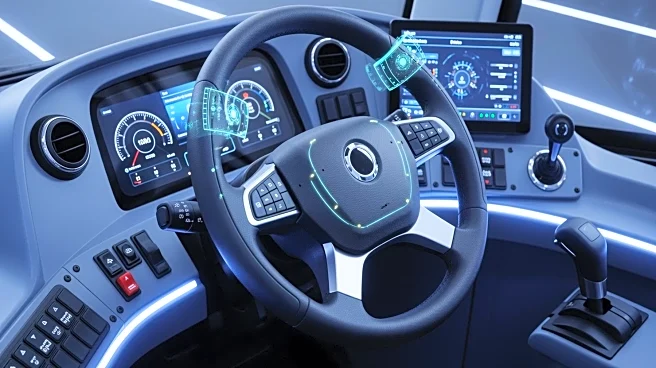What's Happening?
Transport for NSW (TfNSW) is initiating a trial to test advanced driver-assisted technologies on buses, marking a shift from its previous focus on fully autonomous buses. This trial will explore both new buses and retrofitted solutions for the existing
electric bus fleet. The initiative is part of a broader effort to enhance safety and operational efficiency, particularly in areas such as parking, charging, and dispatching buses. The trial will be conducted at the Cudal Future Mobility Testing and Research Centre from February 2026 to 2027, supported by $5 million in funding from the NSW government. The first phase will test level two automation, which includes features like automated emergency braking and lane keep assistance. Subsequent phases will explore higher levels of automation to improve depot operations.
Why It's Important?
The shift towards driver-assisted technologies rather than full autonomy reflects a strategic pivot in enhancing road safety while maintaining the essential role of human drivers. This approach could lead to significant improvements in public transport safety and efficiency, potentially setting a precedent for similar initiatives in other regions. By focusing on driver assistance, TfNSW aims to integrate advanced technologies into existing systems without the regulatory hurdles associated with full autonomy. This could benefit passengers through safer and more reliable services, while also providing a model for other transport authorities considering similar technological upgrades.
What's Next?
TfNSW plans to monitor the outcomes of the trial closely, with potential expansions to other depots and public road operations if successful. The results could influence future transport policies and regulatory frameworks, particularly concerning the integration of higher levels of automation in public transport. Stakeholders, including government bodies and transport companies, will likely watch the trial's progress to assess its viability and scalability. The trial's success could pave the way for broader adoption of driver-assisted technologies in public transport systems across Australia and beyond.














